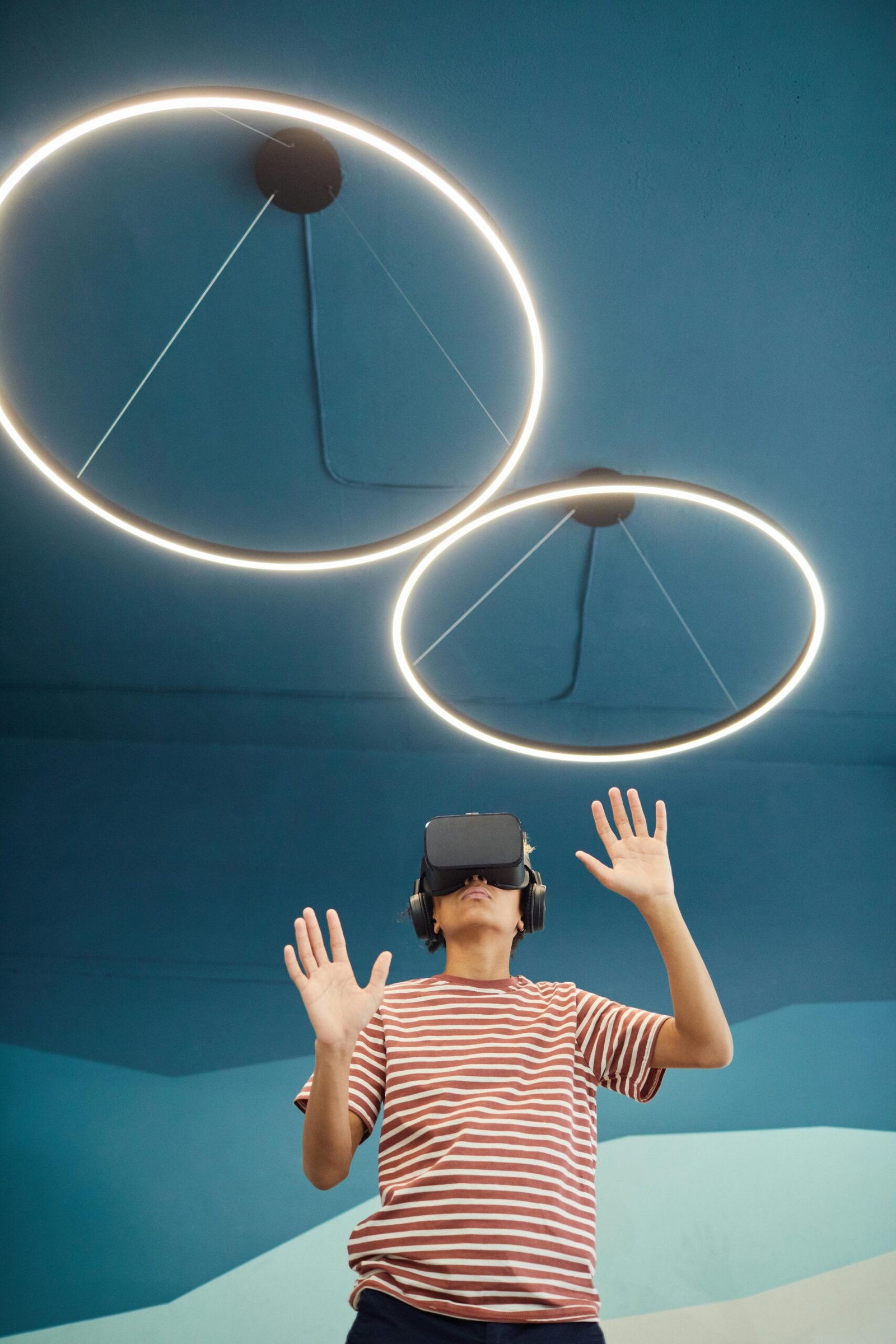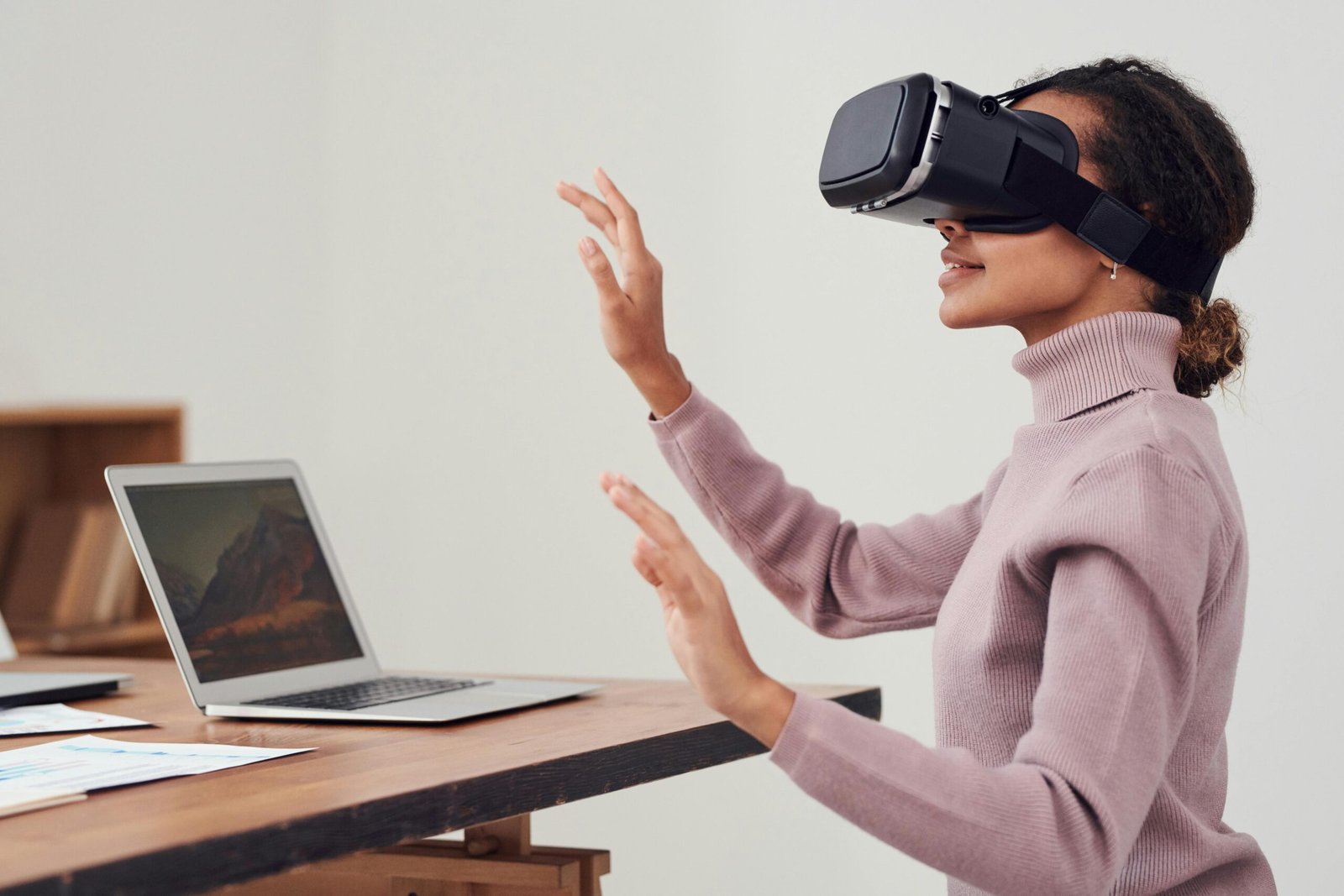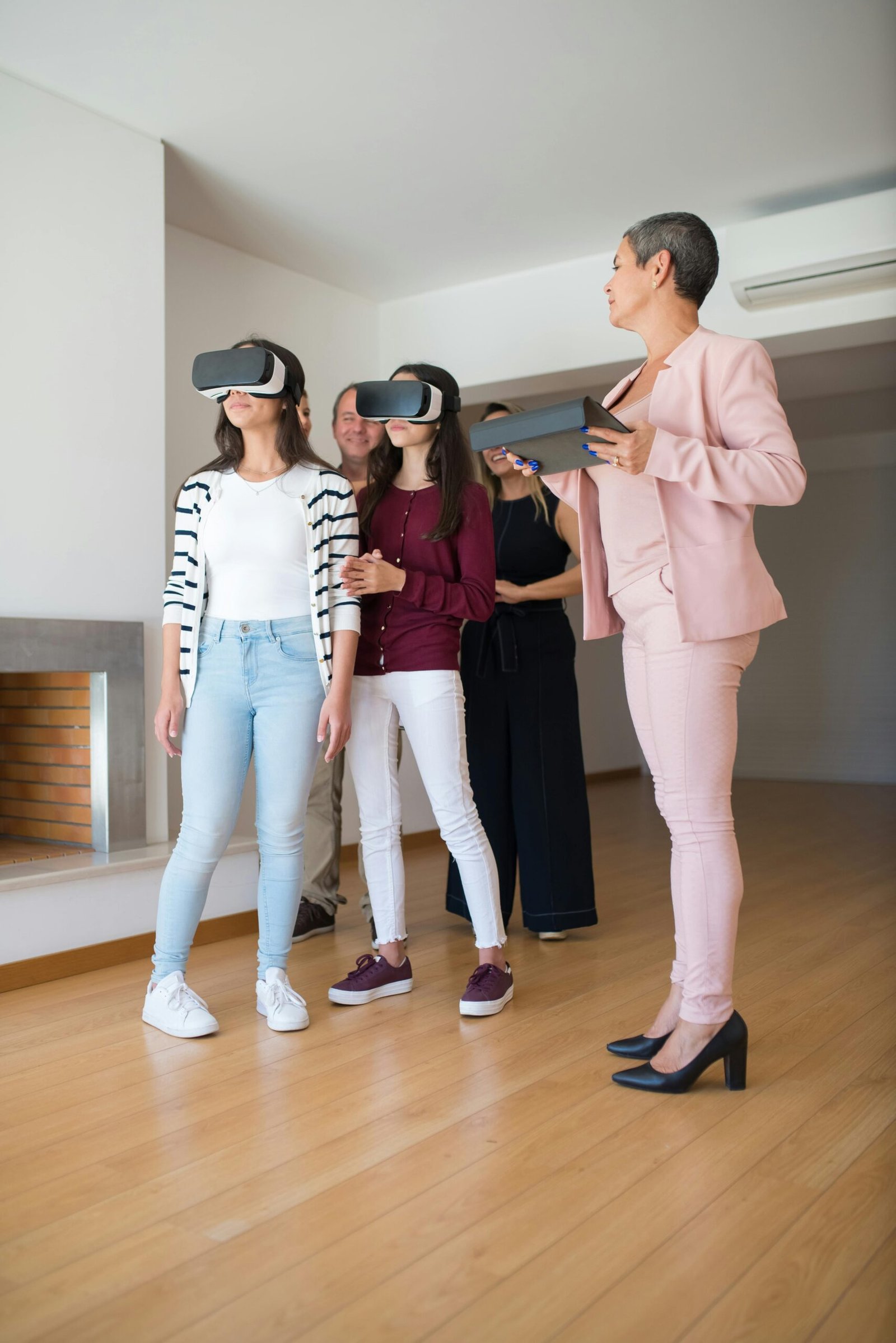
MUIs improve user experiences in previously unimaginable ways by enabling users to interact with devices through a variety of input methods, including speech, gestures, touch, and visual signals.
This technology is not solely concerned with convenience but with enhancing user contentment and productivity by offering a more intuitive and natural method of interacting with technology.
Imagine the ability to manage your household appliances through voice commands while simultaneously modifying settings on a touch-equipped display screen. This is the capability of MUIs, offering a level of convenience that was once unimaginable.
From birth, we acquire the ability to engage with the environment and others through our senses.
Almost all individuals are aware of and capable of articulating their intentions for various actions. However, to effectively utilize technology, it is necessary to acquire the required skills.
Therefore, we should be able to interact with technology intuitively. Humans are most effective when speaking, making gestures with their hands, and using their noses and ears to detect and hear.
It is widely acknowledged that humans should be permitted to engage in a variety of activities in a natural manner. For instance, why is it necessary to compose an email?
What is the reason for the inability to engage in conversation with another individual solely through speech? MUIs aim to bridge this gap, offering a more natural and intuitive way of interacting with technology.
Although somewhat distant, consider the possibility of smelling the aroma of food while perusing a restaurant menu or experiencing the cool air while researching a hill station on a laptop (although it is uncertain whether laptops and food menus will remain relevant or be replaced by something else by that time).
This is the future of user interaction, which is already here with MUIs.

The technology that supports Multimodal User Interfaces is a combination of cutting-edge components:
- Natural Language Processing (NLP) enables devices to understand and interpret language, facilitating conversational interfaces and voice commands.
- Computer Vision: This technology allows devices to comprehend data from their environment and identify objects, faces, and gestures.
- Artificial Intelligence: AI algorithms analyze vast data to identify user behavior patterns, anticipate actions, and provide pertinent responses.
- Sensor Fusion: Enhancing data from sensors such as cameras, microphones, and touchscreens guarantees the interpretation of multimodal inputs.
- Speech Recognition: Advanced speech recognition systems convert spoken words into text format, allowing devices to understand and execute voice commands efficiently.
- Haptic Feedback: It enhances the tactile sensation of the interface by responding to user actions.
- Augmented Reality (AR): AR allows users to interact with the physical and digital worlds by superimposing data onto the real world.
The Development of Multimodal User Interfaces
The concept of interfaces has evolved over several decades:
Initial Phases (1960s–1980s): The introduction of computer graphics and early speech recognition systems laid the groundwork for MUIs. In the 1960s, Ivan Sutherland’s “Sketchpad (or Robot Draftsman)” introduced graphical interaction concepts, while the initial speech recognition systems investigated voice input capabilities.
Commercialization during the 1990s: Progress in the development and commercialization of interfaces was observed during the 1990s. Touchscreen devices and pen-based computing have experienced an increase in popularity. The emergence of user interfaces (GUIs) facilitated the integration of input mechanisms.
The decade of the 2000s saw the emergence of touchscreen and mobile technology. Touchscreens became a standard mode of interaction as smartphones and tablets became more prevalent.
Apple’s iPhone revolutionized user interfaces with groundbreaking innovations such as gestures. Speech recognition technologies, including Apple’s Siri and Google Voice Search, also advanced during this period.
The decade of 2010. Artificial Intelligence Fusion: Integrating AI and machine learning into interfaces was a significant development in the 2010s.
Virtual assistants like Google Assistant and Amazon Alexa combine voice recognition and artificial intelligence to provide intelligent responses. The emergence of AR and VR technologies has further expanded the functionalities of MUI, enabling interactive experiences.
The future of MUIs is not only optimistic but also transformative.
However, it’s important to note that there are still some challenges to overcome. For instance, the accuracy of voice recognition and the potential for misinterpretation of gestures are areas that require further development.
Despite these challenges, innovative applications of MUI across sectors are anticipated due to advancements in AI, NLP, and computer vision. By integrating with MUIs, these technologies can substantially improve user engagement, resulting in more immersive and personalized experiences.
Visualize a world where MUIs enable seamless interactions between humans and technology in context-sensitive, intelligent communities, self-driving vehicles, and beyond.
This is the future that MUIs are influencing, a future in which technology is no longer a hindrance but a seamless extension of our inherent abilities.

Utilization of a Multimodal User Interface
Multimodal User Interfaces (MUIs) incorporate multiple input methods to improve user experiences in various industries.
They are intended to enhance your overall experience by utilizing the distinctive benefits of each input mode to facilitate more intuitive and natural interactions with technology. Be aware of the advantages that MUIs can provide in your daily life.
The following scenarios are critical for use:
- Smart Home Systems: MUIs enable the management of household appliances. Voice commands, touchscreens, and gestures enable users to manage lighting systems, climate controls, security configurations, and entertainment devices effortlessly. For instance, they could utilize voice commands to regulate the thermostat while selecting music through a touch interface.
- Healthcare: In the field, MUIs improve interactions during medical procedures.
During surgeries, surgeons use spoken instructions and hand gestures to navigate through images without touching screens. Patients also use voice commands and touch interfaces to interact with telehealth systems, resulting in a more seamless user experience.
3. Multimodal User Interfaces (MUIs) are features of contemporary vehicles designed to improve the interaction between drivers and passengers. Voice commands and touchscreens regulate navigation, entertainment features, and communication systems, thereby reducing dependence on controls and enhancing safety measures.
4. The integration of voice commands, gestures, and touch inputs is revolutionizing the gaming and entertainment sectors through the use of MUIs. MUIs are utilized in virtual reality (VR) and augmented reality (AR) games to enable players to interact organically through speech and movement in environments.
5. Education technology incorporates MUIs to facilitate learning experiences. Students enhance their comprehension and knowledge retention by effectively interacting with materials through gesture controls, voice prompts, and touchscreens.
6. Retail establishments implement MUIs to enhance consumer interactions. Smart mirrors and interactive kiosks facilitate the exploration of products, the receipt of personalized recommendations, and the completion of purchases through voice commands or gestures and touch interactions.

Numerous industries implement multimodal user interfaces:
- In healthcare contexts, MUIs are utilized in telemedicine services, surgical procedures, and patient monitoring.
In the future, doctors may employ vocal commands to access records while conducting examinations, and surgeons may be able to control robots through hand gestures.
2. Automobile Sector: The sector utilizes MUIs for safety features, navigation aids, and systems. Drivers can use voice commands to manage music playlists, have phone conversations, and adjust GPS settings. Gesture controls enable them to modify settings such as temperature and volume.
3.Retailers use MUIs to display self-service kiosks, which provide personalized purchasing experiences. Customers can use voice commands to obtain product information, verify stock availability, and finalize purchases through touchscreens.
4.The gaming industry incorporates MUIs into VR and AR applications to improve interactivity and immersion. Players use voice commands, gestures, and motion controls to interact with characters and environments.
5.In educational environments, students and instructors engage with content through touchscreens, voice commands, and gestures in intelligent classrooms, which incorporate MUIs for an engaging learning experience.
6.MUIs are utilized in the administration of household appliances by smart home technology. Voice commands and touchscreen gestures enable residents to regulate illumination systems, security measures, heating settings, and entertainment systems.
7. In this MUI world, the financial sector and banking expectations will endure a significant transformation. Initially, all individuals will anticipate a seamless payment transaction experience. Banks and financial institutions must develop a method that is significantly more sophisticated, advanced, and Genz-friendly than the current approach.
While it is natural for most people to convey themselves through voice alone, it is necessary to establish a balance for financial transactions. Due to its flawless nature, the transaction is not susceptible to fraud.
The future of MUIs is filled with the potential for sophisticated, integrated experiences.

Emerging trends to monitor:
- Progress in AI and Machine Learning: In the future, MUIs will employ state-of-the-art AI and machine learning technologies to facilitate interactions that adjust to user preferences as they evolve.
- Improved Sensor Technology: Advances in sensor technology will enhance the precision and responsiveness of MUIs, resulting in interactions that are more environmentally aware and recognize gestures more accurately.
- Integration with IoT: MUIs will facilitate communication with connected devices, enabling more sophisticated environmental control in the Internet of Things (IoT) field.
- AR and VR Integration: By integrating MUIs with augmented reality (AR) and virtual reality (VR), users can interact with content seamlessly, thereby bridging the divide between the physical and digital realms.
- Wearable Devices: Wearables such as AR eyewear and smartwatches that incorporate MUIs help users interact with technology while in motion.

Conclusion:
Multimodal User Interfaces represent a significant advancement in human-computer interaction, providing more efficient, natural, and intuitive methods of interacting with digital systems.
MUIs enhance the user experience in healthcare, automotive, retail, entertainment, education, and smart home technology by integrating input such as touch, voice, gestures, and sight. The future of MUIs is promising as a result of the advancements in AI, sensor technology, IoT integration, and AR/VR. These developments will. Enhance the capabilities of MUIs to facilitate more seamless and intuitive interactions with digital environments. Ultimately, this will alter how we interact with the world.

